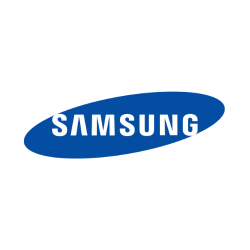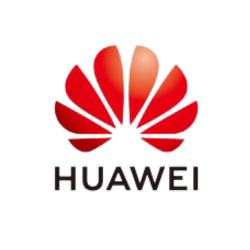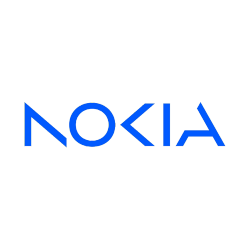
Overview of Nokia 6280
The Nokia 6280 broke onto the scene in 2005 as a feature phone with capabilities that were considered quite advanced for its time. Manufactured by the once-dominant Finnish company Nokia, the 6280 model was designed to appeal to consumers seeking a reliable phone with multimedia capabilities. This device stands as a testament to a period in mobile technology where Nokia's innovation shined through, delivering products that were well appreciated across the globe.
Design and Build
The Nokia 6280 features a slider design that was both trendy and practical, offering protection to the keypad when not in use. Despite its compact body, measuring 100 x 46 x 21 mm and weighing 115 grams, it was a comfortable phone to hold during calls or while using its various functions. Its sleek design allowed users to appreciate a balance between form and functionality, a hallmark of Nokia's phone designs during this era.
Display
With a 2.2-inch TFT display capable of showing 256K colors, the Nokia 6280 delivered a visual experience that was quite vibrant for its time. The screen resolution of 240 x 320 pixels offered decent clarity for viewing photos, playing games, and navigating through the phone's menu. The display represented approximately 32.6% screen-to-body ratio, which was sufficient for feature phones of that generation.
Camera Capabilities
One of the standout features of the Nokia 6280 was its camera. It boasted a 2MP main camera, which was considered quite capable in 2005 for capturing standard quality images. The inclusion of an LED flash improved the camera's utility in low-light conditions. Additionally, the phone supported video recording at 480p - a noteworthy feature for multimedia enthusiasts at the time. The presence of a VGA front camera facilitated basic video calling, adding a layer of connectivity that users appreciated.
Performance and Storage
As a feature phone, the Nokia 6280 was not equipped with the advanced processors found in today's smartphones. However, it provided users with a functional experience thanks to its reliable internal configuration. The phone came with an internal memory of 6MB, which could be expanded using a miniSD card—64MB was included, allowing users to store more photos, music, and other multimedia content.
Network and Connectivity
The Nokia 6280 supported both GSM and UMTS networks, which enabled it to handle 2G and 3G connectivity. Operating on frequencies of GSM 900/1800/1900 and UMTS 2100 bands, it ensured users could stay connected almost anywhere. The device was capable of achieving speeds up to 384 kbps, which was impressive at a time when fast mobile internet was still developing.
Battery Life
Powered by a removable Li-Ion 970 mAh battery, the Nokia 6280 delivered a standby time of up to 200 hours and a talk time of up to 5 hours. This level of battery performance meant users could rely on the phone for a full day’s use without necessitating constant charging—something that was essential for mobile users during that period.
Sound and Multimedia
Multimedia was a crucial aspect of the Nokia 6280's appeal. It featured a loudspeaker for hands-free calls and supported various alert types, including downloadable polyphonic and MP3 ringtones. Although it did not have a 3.5mm headphone jack, the phone supported Bluetooth 2.0 with A2DP for wireless audio transmission, enabling users to enjoy music without the hassle of cables.
Communication and Applications
This device supported a range of messaging options, including SMS, MMS, email, and instant messaging, making it versatile in communication. The inclusion of a WAP 2.0/xHTML browser facilitated light web browsing. Nokia also preloaded several games, such as 3D snake and 3D rally, and users could download additional Java-based applications, which expanded the phone's functionality.
Additional Features
The Nokia 6280 featured an infrared port for wireless data transfers and stereo FM radio for entertainment on the go. USB connectivity was facilitated through Nokia's Pop-Port 2.0 interface, allowing for data synchronization with PCs. As for personalization, the phone offered customization options with themes and downloadable content.
Conclusion
The Nokia 6280 stands as a hallmark of mid-2000s mobile technology. It delivered a solid package combining essential communication features with multimedia enhancements that were quite modern for its time. From its design, camera capabilities, and connectivity options to the reliable Nokia build quality, the Nokia 6280 was well-regarded by its users and remains a symbol of a once-thriving mobile phone giant.
Key Features of Nokia 6280
- Technology: Supports GSM and UMTS networks
- 3G Speed: Yes, up to 384 kbps
- Display: 2.2 inches TFT, 256K colors with a resolution of 240 x 320 pixels
- Camera: 2 MP main camera with LED flash and 480p video recording
- Selfie Camera: VGA video call camera
- Memory: Supports miniSD card with 64 MB included
- Bluetooth: Version 2.0 with A2DP support
- Radio: Stereo FM radio available
- Battery: Removable Li-Ion 970 mAh, offering up to 200 hours stand-by and 5 hours talk time
- Games: Includes 3D snake, 3D Rally, and downloadable games
- Colors Available: Carbon Black, Graphite Grey
- Compact and portable design with dimensions of 100 x 46 x 21 mm and weight of 115 g
Disadvantages of Nokia 6280
- Lacks modern connectivity options such as WLAN and GPS.
- Limited internal memory of only 6MB, which may require frequent memory card management.
- No 3.5mm headphone jack, limiting audio accessory compatibility.
- Small screen size with low screen-to-body ratio (~32.6%).
- Discontinued model, may lack support and spare parts availability.
- Older Bluetooth version (2.0), which could affect compatibility with newer devices.
- Basic VGA front camera, not suitable for high-quality selfies or videos.
- Relatively bulky and heavy design for its time.


















View Also
More Phones
All Rights Reserved +14054 Phones © Mobilawy 2025

























